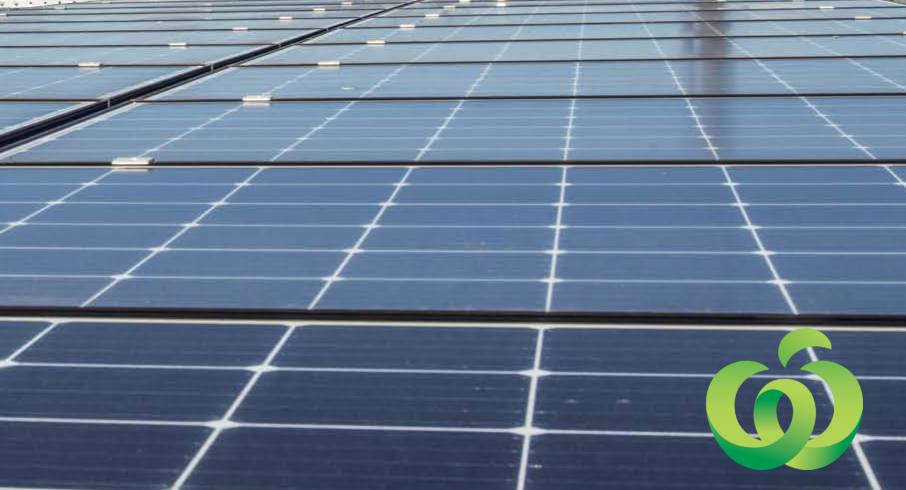
Woolworths’ expansion of its Adelaide Regional Distribution Centre (ARDC) at Gepps Cross will include the installation of a commercial-scale solar power system.
Last week, construction work on the $57 million expansion project kicked off. Approximately 140 local jobs will be created over the 14- month build and once completed the facility will cover 94,000 square metres, which the company says is more than four times the size of Adelaide Oval.
Helping to power the centre will be 3,500 solar panels installed across the rooftop. Woolworths says the installation will be “1.6MVa”. This is a rather odd way of expressing a system’s specifications, which are usually noted in terms of MW capacity.
Woolworths says this will be the largest solar power system in its Australian network. The $2.5 million installation will generate equivalent to around twenty per cent of the centre’s electricity requirements according to the company.
In other solar-related news from Woolworths, it seems it won’t be long before the company’s distribution centre in Dandenong South in Melbourne will be fully operational. That facility also has a significant rooftop PV installation.
Late last year, the Woolworths store in Young became the first in Australia with solar panels installed on car park shading structures. The 366 panels will generate more than 185,000 kilowatt hours of clean electricity each year.
According to Woolworths Group’s 2018 Sustainability Report, solar power systems had been installed on 62 stores and two distribution centres at the point of the report’s release, with a total capacity of approximately 7MW. The company was also trialing a Tesla battery system at its Erskine Park Liquor Distribution Centre.
320MW Of Solar Capacity Potential
Woolworths Group certainly has no shortage of rooftop space for more solar. According to a 2015 RenewEconomy article, a 2010 submission from Woolworths to the Victorian Government suggested its rooftop space suitable for installing PV could host 320MW of capacity.
Solar energy is helping Woolworths Group in reducing its carbon emissions. The company had set a target of reducing emissions across its operations to 10 per cent below 2015 levels by 2020, but according to the 2018 Sustainability Report, it had achieved a 13 percent reduction by that point.
It’s great to see companies increasingly putting their commercial rooftop real estate to good use through harvesting the energy of the sun. It not only makes a valuable contribution to reducing emissions and alleviating pressure on the mains grid, but can also have a very positive impact on a business’s bottom line through slashing mains-supplied electricity costs.
With the cost of commercial solar continuing to drop and payback times decreasing, we can expect to see the number of PV arrays appearing on commercial rooftops across Australia continuing to accelerate.

 RSS - Posts
RSS - Posts



Speak Your Mind